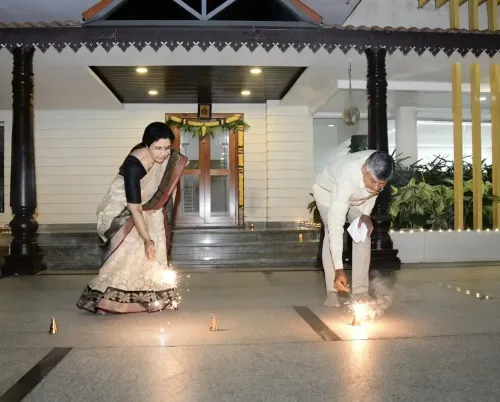Is the Amarnath Yatra Ready? J&K L-G Inspects Baltal Base Camp

Synopsis
Key Takeaways
- The Amarnath Yatra is a significant pilgrimage held annually.
- J&K Lt Governor Manoj Sinha inspected the Baltal base camp’s arrangements.
- The pilgrimage begins on July 3 and ends on August 9.
- Local communities play a vital role in the Yatra's success.
- Helicopter services are available for easier access.
Srinagar, June 11 (NationPress) The Lieutenant Governor of Jammu and Kashmir, Manoj Sinha, visited the Baltal base camp in Ganderbal district on Wednesday to assess the arrangements made by the Shri Amarnathji Shrine Board for disaster management and the Yatri Niwas complex.
During his visit, the LG remarked, "I conducted an on-site inspection of the facilities at the Shri Amarnath ji Shrine Board's Disaster Management and Yatri Niwas Complex here at Baltal. I also had the opportunity to interact with the task force and the staff of BRO who are actively working on enhancing and maintaining the yatra track."
This year's pilgrimage to the Amarnath Cave shrine is set to commence on July 3 and will conclude on August 9, coinciding with the festivals of Shravan Purnima and Raksha Bandhan.
Located at an altitude of 3888 metres in the Kashmir Himalayas, the cave shrine features an ice stalagmite that changes in size with the lunar phases.
Many devotees believe that this ice formation represents the divine powers of Lord Shiva.
Every year, pilgrims reach the cave shrine via either the traditional southern route from Pahalgam, which takes three days, or the more direct northern route from Baltal, allowing them to return to the base camp the same day after having darshan.
Helicopter services are provided for the Yatris at both base camps in Baltal and Pahalgam.
The Shri Amarnath Yatra stands as a symbol of communal harmony, with local Muslims playing a crucial role in the successful execution of the pilgrimage.
As Pony Wallahs, laborers who assist pilgrims, as well as hoteliers, tea stall owners, and knowledgeable guides, locals are integral to ensuring the Yatra runs smoothly.
Historical accounts state that a Muslim shepherd from the Malik family of Bot Kote village near Pahalgam discovered the cave shrine while tending to his sheep.
In the past, before the Shri Amarnath ji Shrine Board assumed responsibility for the annual Yatra, the shepherd's descendants received a portion of the offerings made at the shrine.









